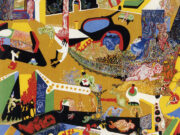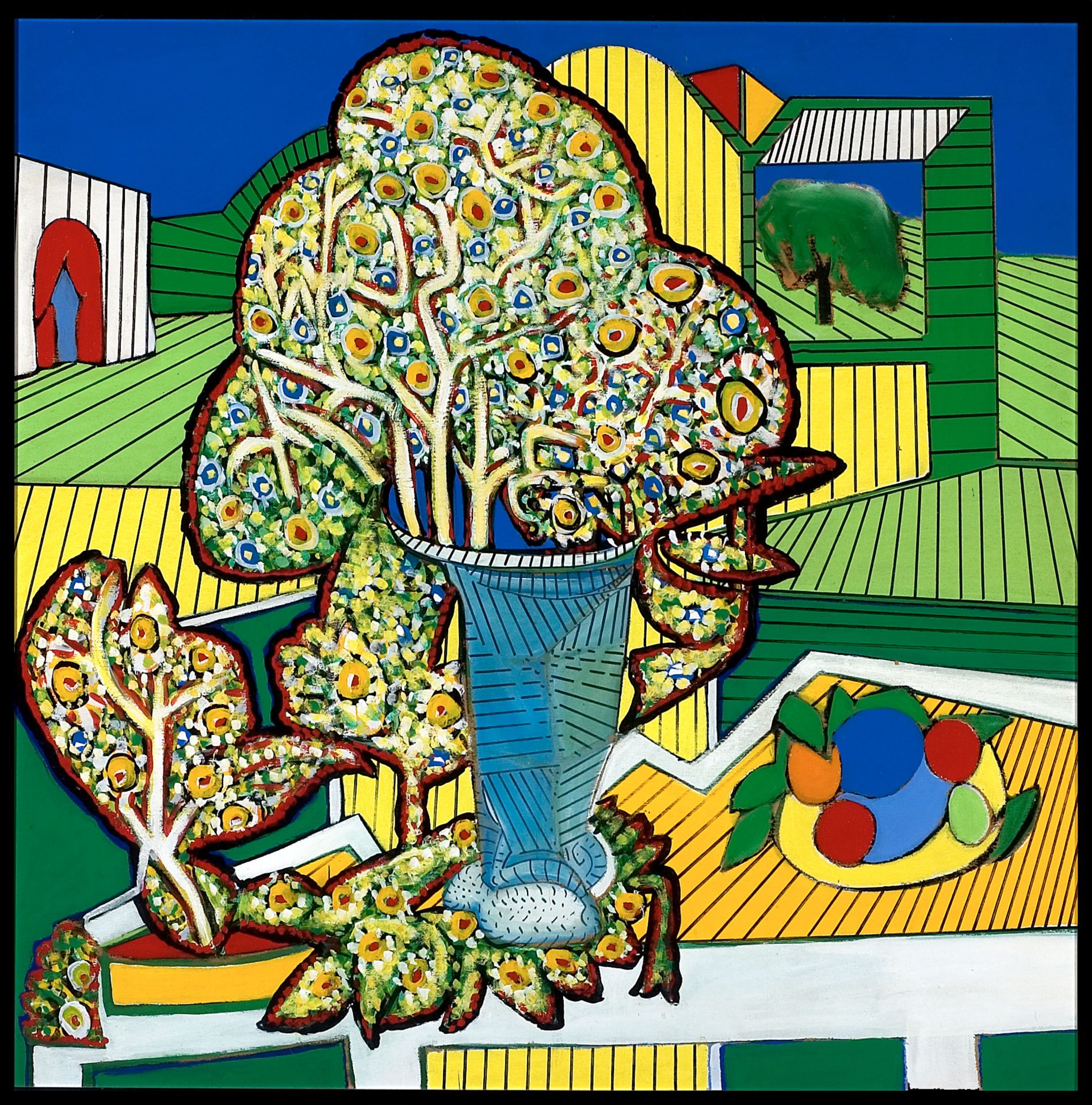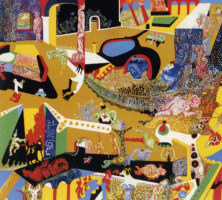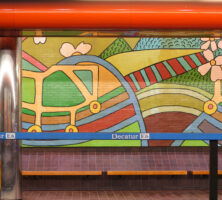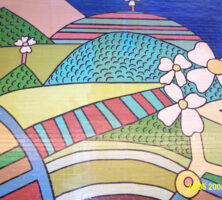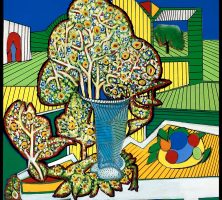Larry Connatser, an accomplished pianist and painter, grew up in Atlanta and lived on and off in Georgia throughout his life. A self-taught artist, Connatser developed an expressionistic and brilliantly colored style that usually portrays fantasy figures inhabiting dreamlike spaces. His innovative paintings, drawings, and murals were inspired by music, surrealism, and an intensive personal study of art history.

Courtesy of the Joan Cobitz Estate
The only child of Evelyn Meyers and Roy Connatser, Laurence Stuart Connatser was born on September 17, 1938, in Birmingham, Alabama. The family moved to Atlanta when he was a young child, and he took piano lessons there from the time he was eight years old. Connatser attended public schools and was valedictorian of his class at Northside High School in 1956. When he left Atlanta to attend Vanderbilt University in Nashville, Tennessee, he seriously contemplated continuing his musical studies as a professional pursuit.
While a student at Vanderbilt, he and a friend opened Tulip Is Black, Nashville’s first coffeehouse. This successful business venture became a venue for folk singing, poetry readings, and art exhibitions. Connatser had not yet begun to paint but was influenced by the Austrian-born expressionist Eugene Biel-Bienne, who was then an assistant professor in Vanderbilt’s art department. In 1961 Connatser graduated from college and moved to Chicago, Illinois, to work for an educational publishing firm.
Disillusioned with his job in publishing, Connatser began to paint in his spare time. He developed a unique style using a vibrantly colored palette of acrylic paints that were executed on a hard panel of Masonite instead of canvas. Interlocking forms, often covered with dots and outlined in Black marker, can be seen as a visual expression of his musical training. The paintings were usually untitled and intricately composed into imaginary landscapes containing discernible fantasy figures. With financial support from his parents, Connatser quit his job in 1963 to devote his time to painting. In 1965 his work was exhibited at St. Xavier College in Chicago, in 1966 at the sixty-ninth annual Chicago and Vicinity Show at the Art Institute of Chicago, and in 1967 at the Newark Museum in New Jersey.
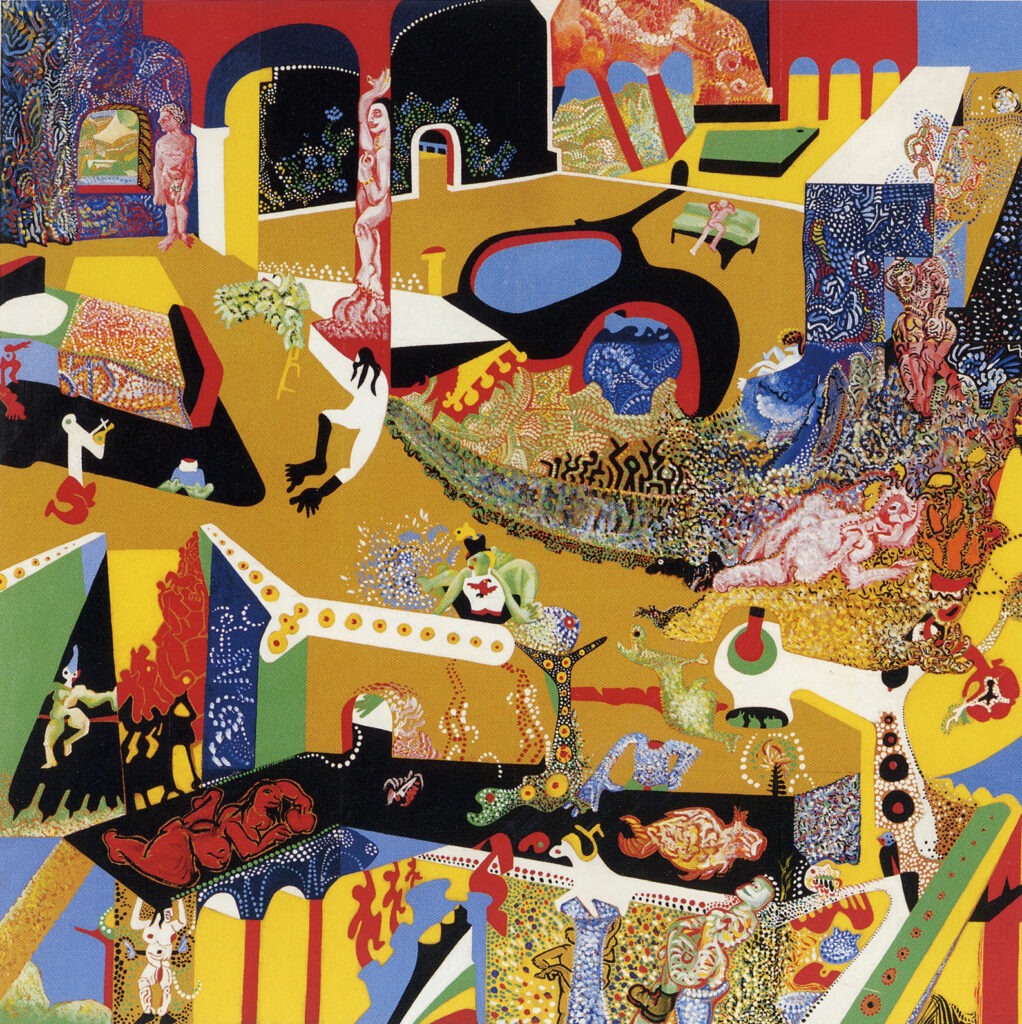
Courtesy of Morris Museum of Art
Prior to his return to Georgia in 1971, Connaster’s work was shown at the College of Architecture at the Georgia Institute of Technology and at the Georgia State College (later Georgia State University) Art Gallery, both in Atlanta; the Columbia Museum of Art in South Carolina; the Norfolk Museum of Arts and Sciences (later the Chrysler Museum of Art) in Virginia; and galleries in Illinois. Upon his return to Georgia, Connatser maintained residences in Savannah and Atlanta for the rest of his life. He staged private exhibitions from his home and invited interested clients to buy his paintings directly. A prolific artist, he eschewed gallery representation and juried exhibitions, preferring to take commissions or exhibit his work when invited.
Connatser received several public-mural commissions that gave his work increased exposure. The first, in 1974, was a seven-story-tall mural on a commercial building in downtown Atlanta. Commissioned by Urban Walls, a joint venture of the Arts Festival of Atlanta and Central Atlanta Progress with support from the National Endowment for the Arts, the mural was featured on the May 19, 1974, cover of the magazine section of the Sunday (Atlanta) Journal-Constitution. It was later destroyed when the building was razed to make way for the revitalization of the city’s financial district. Twin murals, visibly present to countless commuters each day, were commissioned for the Decatur MARTA (Metropolitan Atlanta Rapid Transit Authority) station, part of Atlanta’s subway system. Completed in 1981, each mural is sixty-six feet long and twenty-six feet high, and depicts stylized renderings of the mountains and sea as vacation destinations. Other Atlanta commissions include the poster for the 1984 Piedmont Arts Festival and a set of five murals for an office building at Saint Joseph’s Hospital in Atlanta.
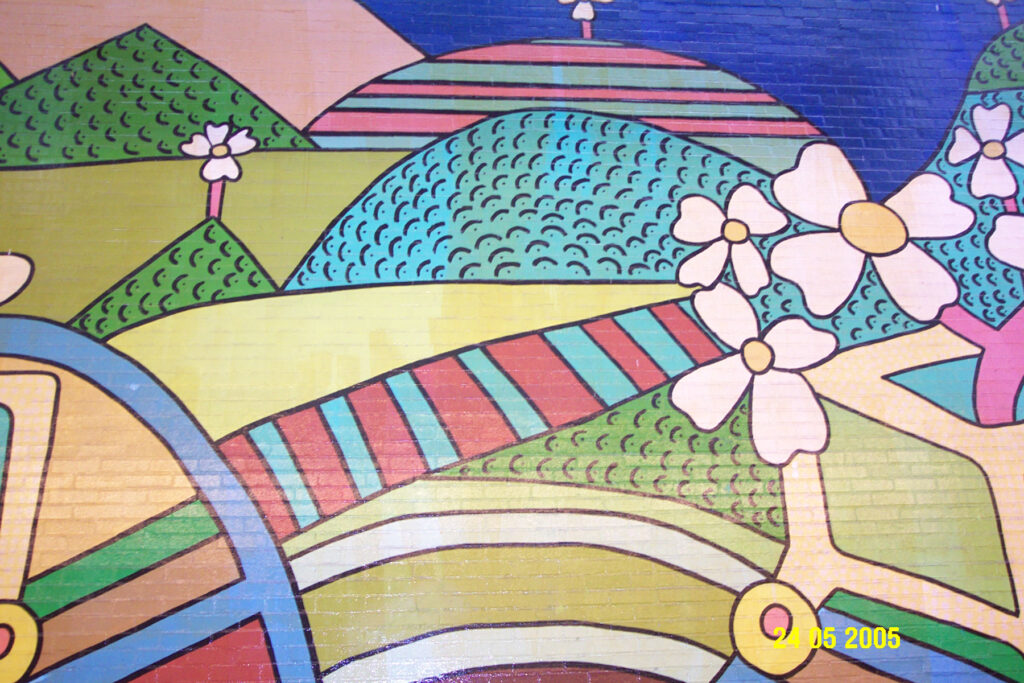
Courtesy of MARTA
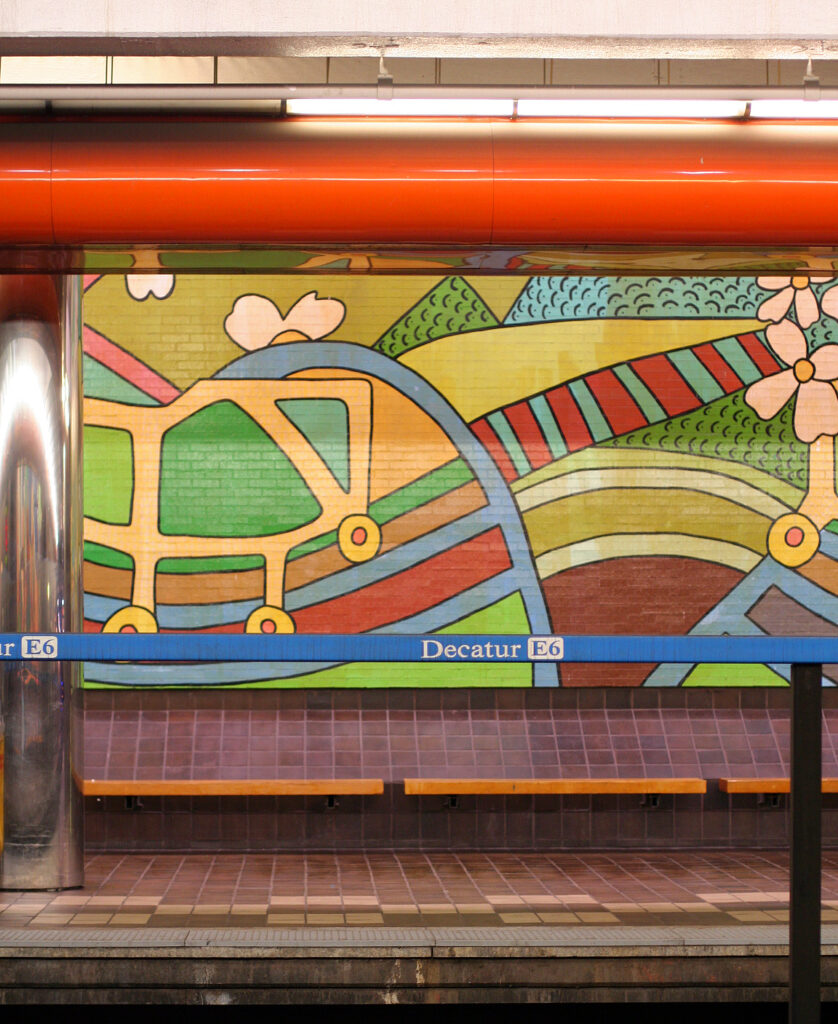
Image from Joel Mann
The Savannah College of Art and Design commissioned Connatser to design its first logo and a floor mural for the original library, which was located in Poetter Hall. The thirty-six-by-sixty-foot mural dominated the reading room. Designed by Connatser and executed with the help of students, it depicts a chair, books, and an apple. The library eventually outgrew the space and relocated to another part of campus, but the mural is part of the administrative offices that are now located there.
Although he was an artist out of the mainstream, Connatser achieved wide regional recognition during his lifetime. In 1974 he was a guest artist at Coker College in South Carolina, and in 1975 he was included in a Georgia Public Television documentary about up-and-coming artists. He created 2,500 paintings, 800 drawings, and many murals in a career that lasted about three decades. Three of his acrylic paintings—#1764 (1974), #2149 (1977), and an untitled work—are included in Georgia’s State Art Collection.
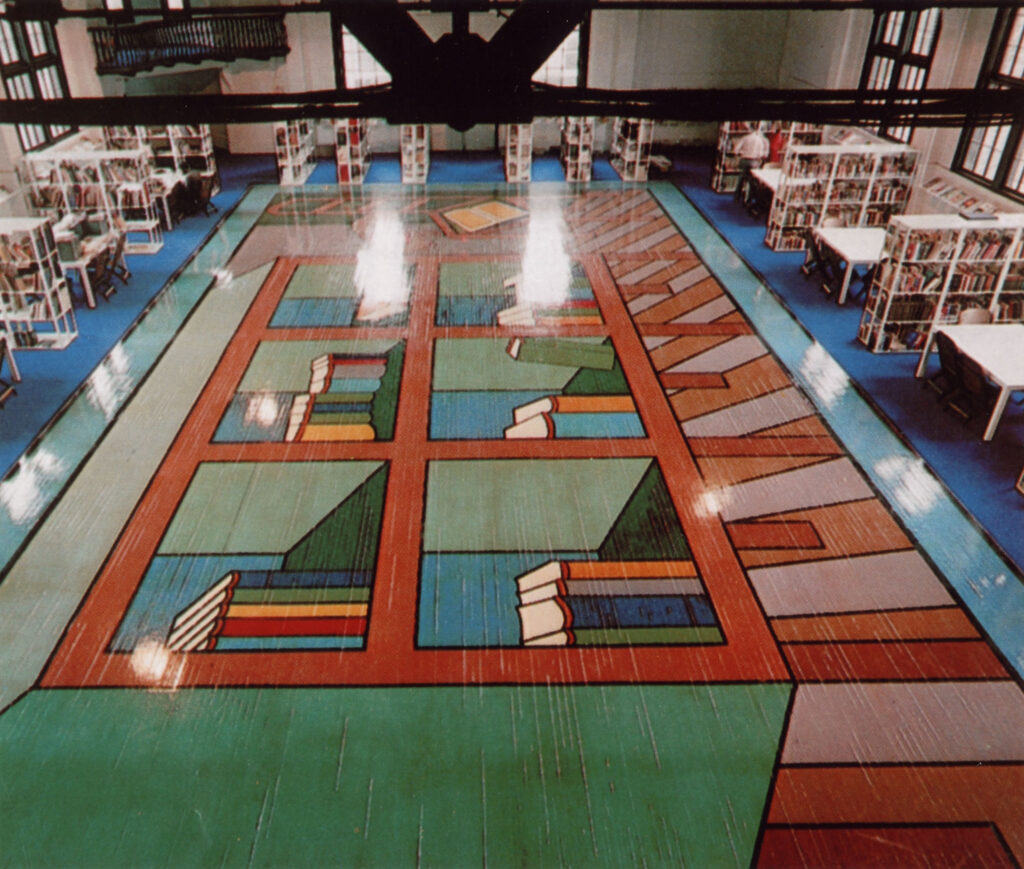
Courtesy of the Savannah College of Art and Design
Connatser died of AIDS in 1996, and the only retrospective exhibition of his work, Southern Melodies, was held at the Telfair Museum of Art (later Telfair Museums) in Savannah in 2002. His work is represented in numerous private collections and at the Chrysler Museum of Art, the Telfair Museums, and the Morris Museum of Art, which is the residuary beneficiary of the Connatser estate.


